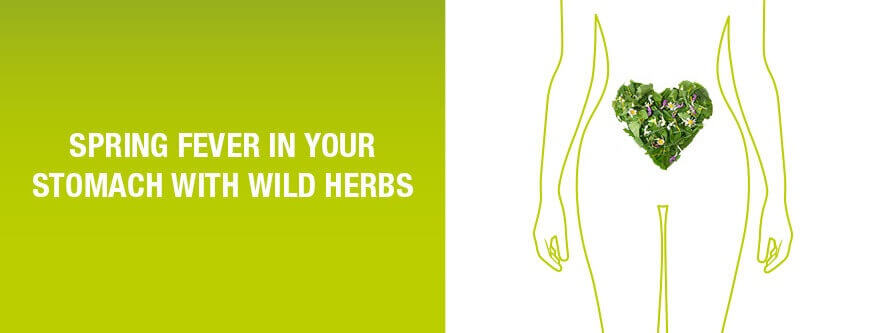Wild herbs were forgotten for a long time and were dismissed as weeds. They are now experiencing a renaissance: they are becoming easier and easier to find at markets and in organic food stores and are even being used in gourmet and award-winning kitchens. Wild herbs bring spring into your kitchen and aromatic variety to your plate. They usually have a much more intensive taste than bred varieties and are rich in vitamins, minerals, trace elements, and secondary plant compounds.
You can cultivate them in your own wild herb garden without much effort. You can also grow wild herbs in pots, this saves time and money. Wild plant gardens grow virtually by themselves, are low maintenance, and do not cost much. If you prefer collecting herbs in the wild, you should take a special course beforehand. Otherwise the risk of confusing edible wild herbs with poisonous ones is too great. Wild garlic is a well-known example: it can easily be mistaken for the poisonous lily of the valley. The safest way to tell the difference is that wild garlic has a garlic smell.
Did you know that wild herbs make great spring remedies?
Wild herbs contain valuable active substances, such as essential oils, bitter compounds, and flavonoids, which help your body detoxify.
Spring remedy
In spring many wild plants grow that can have a detoxifying and strengthening effect. Wild garlic, nettle, and dandelion are good examples for a spring remedy and help you overcome spring tiredness.
Wild garlic is rich in minerals, trace elements, vitamin C, and flavonoids. It has an antiseptic, digestive, and anti-inflammatory effect.
Use: heat causes wild garlic to lose much of its characteristic taste, so it is usually eaten raw. Minced wild garlic goes well with salads, sauces, pesto, casseroles, and potato dishes.
Nettle contains high amounts of vitamin C (about three times the amount found in kale), potassium, phosphorous, silicon, magnesium, calcium, iron, and vitamins A and E. Nettles have a diuretic and blood-purifying effect.
Use: young, tender leaves make a wonderful spinach substitute. Finely chopped leaves compliment salads, soups, and sauces. Blanching the nettle destroys the nettle hair.
Dandelion contains high amounts of vitamin C and D, potassium, bitter compounds, and flavonoids. Bitter compounds stimulate the gall bladder and liver and support the body’s own detoxification function.
Use: young and slightly bitter tasting leaves can be prepared like spinach or eaten as salad.
Tip: wild herbs are prepared just like kitchen herbs. Rinse them with cold water, pat dry, and chop with a sharp knife. Fresh herbs have the best aroma. You can also freeze them: put finely chopped herbs in ice cube trays and fill the trays to the top with water.


